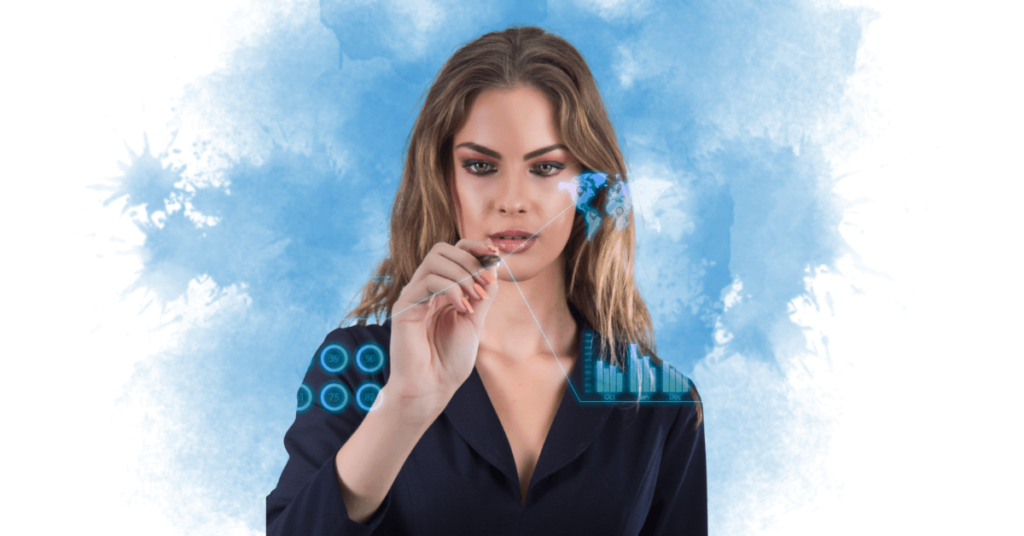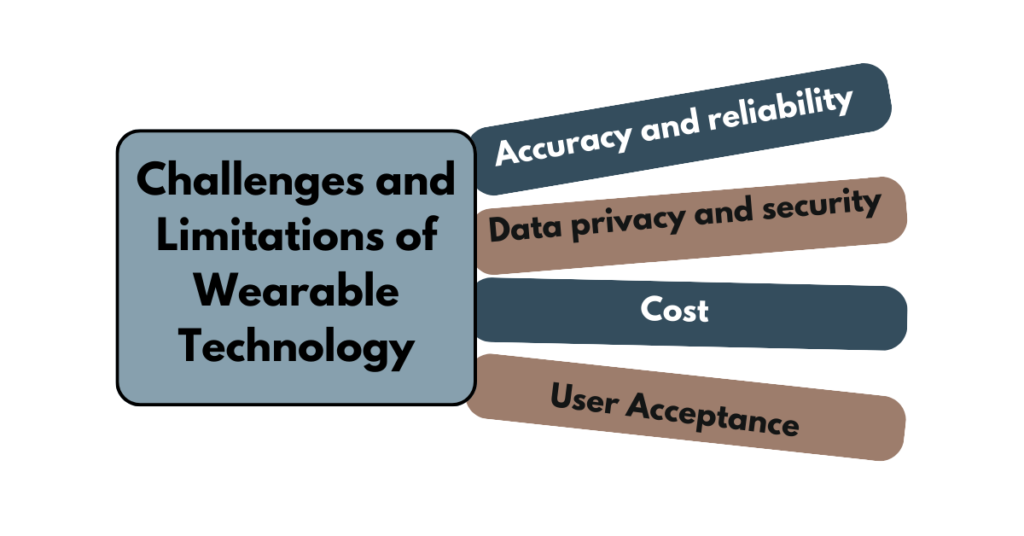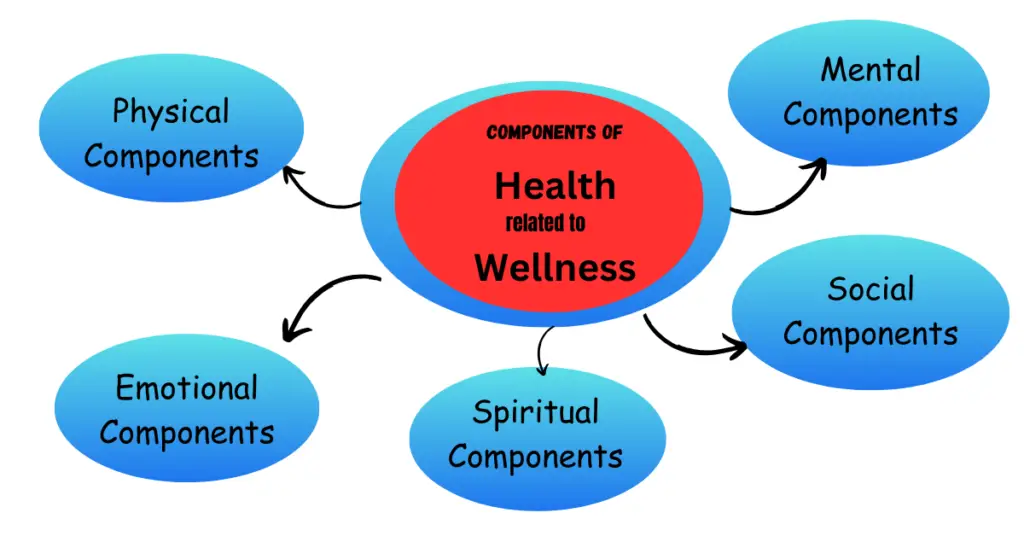Experience the Revolution: How Wearable Technologies Are Transforming Our Lives and Work. Explore the impact of cutting-edge wearables on health, productivity, and everyday living.
Wearable technology is rapidly changing the way we think about healthcare. Millions of people use wearables today—once thought of as a novelty—to manage chronic diseases, check their activity, and monitor their health.
Wearable devices can collect a wide range of data, including heart rate, blood pressure, sleep patterns, activity levels, and even stress levels. This data can help identify potential health problems early on, track progress over time, and make informed decisions about lifestyle changes.
Contents
- 1 The Impact of Wearable Technologies on Health and Lifestyle
- 2 Wearable Devices: Transforming Healthcare Through Continuous Monitoring
- 3 The Future of Wearable Technology
- 4 Challenges and limitations of wearable technology
- 5 Solutions to the Challenges and limitations of wearable technology
- 6 Frequently Asked Questions
The Impact of Wearable Technologies on Health and Lifestyle
Wearable technology is transforming preventive healthcare in the following ways:
Monitoring Chronic Conditions
Wearable devices can monitor chronic conditions such as diabetes, heart disease, and asthma. As a result, patients can stay on top of their situation and ensure their treatment plan is effective. For example, a wearable device can alert patients when their blood sugar levels are too high or too low or when their heart rate is abnormally fast or slow.
Detecting Diseases Early
Wearable devices can also detect diseases when they are most treatable. For example, a wearable device can monitor changes in skin pigmentation that could indicate skin cancer or changes in heart rhythm that could indicate a heart condition.
Promoting Healthy Behaviors
Additionally, wearable technology can support healthy habits, including exercise, rest, and stress reduction. For example, a wearable device can track a person’s daily step count and encourage them to be more active. Or, a wearable device can track a person’s sleep patterns and give them tips on improving their sleep quality.
Personalized Healthcare
Wearable devices can also help to personalize healthcare. By tracking a person’s health data, doctors can develop more customized treatment plans and better predict a person’s risk of developing certain diseases.
Wearable Devices: Transforming Healthcare Through Continuous Monitoring

The following are some examples of how wearable technology is being used in preventive healthcare today:
Apple Watch
The Apple Watch has some features that can be used for preventive healthcare, including:
Heart Rate Monitoring
The Apple Watch can continuously track heart rate, which can help identify signs of potential health problems such as atrial fibrillation, heart failure, and anemia.
Blood Pressure Monitoring
The Apple Watch uses photoplethysmography (PPG) to assess blood pressure. Although it is still in development, this feature has the potential to give consumers important information about their blood pressure levels.
Sleep Tracking
The Apple Watch can track sleep patterns, including sleep duration, stages, and respiratory rate. You can use this information to identify sleep disorders like insomnia and sleep apnea.
Activity Tracking
The Apple Watch can track activity levels, including steps taken, distance traveled, and calories burned. Assessing overall fitness levels and tracking progress is possible using this information.
Fitbit
Fitbit devices offer similar features to the Apple Watch, including heart rate monitoring, sleep tracking, and activity tracking. In addition, some Fitbit devices also offer features such as:
Stress Monitoring
The HRV measures the variation in time between heartbeats. HRV is a measure of the variation in time between heartbeats. A lower HRV is typically associated with higher levels of stress.
SpO2 Monitoring
Some Fitbit devices can measure blood oxygen levels (SpO2). SpO2 is a measurement of the blood’s oxygen transport capacity. Low SpO2 levels can indicate many health problems, including respiratory infections, asthma, and heart disease.
Dexcom G6
The Dexcom G6 is a continuous glucose monitor (CGM) that people with diabetes can use to track their blood sugar levels throughout the day and night. The Dexcom G6 comprises a tiny sensor inserted under the skin and a transmitter worn on the body. The sensor continuously measures blood sugar levels and transmits the data to the transmitter, which then sends the data to a smartphone or receiver.
The Dexcom G6 can identify trends in blood sugar levels and track the effects of food, exercise, and medication on blood sugar levels. Informed decisions regarding diabetes management can help prevent complications such as hypoglycemia (low blood sugar) and hyperglycemia (high blood sugar).
Oura Ring
The Oura Ring is a bright ring that tracks sleep patterns, activity levels, and heart rate variability. The Oura Ring also tracks body temperature and menstrual cycles.
The Oura Ring can identify trends in health data and track the effects of lifestyle changes on overall health. As a result of this information, you can make informed decisions about how to boost energy levels, reduce stress, and improve sleep quality.
Smart Clothing
Innovations in textile technology have given rise to a new frontier in wearable technology—bright clothing embedded with sensors. These garments seamlessly integrate technology into everyday life, offering a discreet and continuous monitoring experience.
Monitoring Physiological Parameters
Bright clothing, equipped with woven sensors, monitors physiological parameters such as heart rate, body temperature, and muscle activity. This continuous monitoring provides a holistic understanding of an individual’s health, complementing the data offered by traditional wearables.
Enhancing Everyday Integration
The integration of technology into clothing enhances the everyday integration of wearables. Individuals can enjoy the benefits of health monitoring without needing additional devices, making it an appealing option for those who value subtlety and convenience.
The Future of Wearable Technology

The future of wearable technology is bright. As technology advances, we expect more sophisticated wearable devices to track health, monitor chronic conditions, and promote healthy behaviors. As technology improves, we can expect more advanced wearables to track fitness, monitor chronic diseases, and promote healthy behaviors.
Here are a few trends that we can expect to see in the future of wearable technology:
More Miniaturized and Discreet Devices
Wearable devices are already becoming smaller and more sensitive. Ultimately, we can expect to see wearable devices so small and lightweight that we can barely even notice we are wearing them.
More Integrated Devices
Wearable devices are also becoming more integrated with other devices, such as smartphones and smart speakers. We can expect wearable devices to seamlessly interact with other devices to provide a more comprehensive and personalized healthcare experience.
More Advanced Sensors
Wearable devices are already equipped with various sensors to collect data about our health and activity levels. In the future, we can expect to see wearable devices with even more advanced sensors that can manage more accurate and detailed data about our health.
More Personalized Insights
As wearable devices collect more data about our health and activity levels, they will be able to provide us with more customized insights about our health and well-being. Using this information, we can make informed health and fitness decisions.
Here are some potential future uses for wearable technology.
Wearable devices could detect early signs of cancer or other diseases. Patients could benefit from earlier diagnosis and treatment.
Using wearable devices for chronic disease monitoring would be beneficial. To guarantee that patients are receiving the best care possible, this could assist clinicians in modifying treatment regimens as necessary.
Wearable devices could provide real-time feedback on workouts and other activities. By following the appropriate techniques, people can maximize the effectiveness of their physical movements and reduce the risk of injury.
Wearable devices could integrate with other healthcare technologies, such as electronic health records (EHRs). Doctors can make better care decisions with a complete view of a patient’s health.
Wearable technology has the potential to revolutionize preventive healthcare, but it also faces some challenges and limitations.
Challenges and limitations of wearable technology
Some of the challenges and limitations of wearable technology include:
Reliability and Accuracy
Several variables may impact wearable technology, including the environment, sensor placement, and calibration. More accurate and reliable data readings may arise as a result of this.
Data Privacy and Security
Wearable devices collect sensitive data about our health and activity levels. This data is vulnerable to hacking and other cyber threats.
Cost
Wearable technology may prove pricey, particularly for high-end models with cutting-edge capabilities. Such could make them inaccessible to certain people.
User Acceptance
Some people may hesitate to wear wearable devices due to privacy concerns, discomfort, or inconvenience.
Despite these challenges and limitations, wearable technology has the potential to play a significant role in preventive healthcare. Addressing the challenges and limitations can make wearable technology more accurate, reliable, affordable, and user-friendly.

Solutions to the Challenges and limitations of wearable technology
There are several possible solutions to the challenges and limitations of wearable technology.
Accuracy and Reliability
Manufacturers can improve the accuracy and reliability of wearable devices by using better sensors, developing more sophisticated data processing algorithms, and conducting rigorous testing.
Data Privacy and Security
Manufacturers can improve data privacy and security by implementing strong security measures like encryption and authentication. Users can additionally exercise more control over the collection and usage of data.
Cost
Manufacturers can reduce the cost of wearable devices by making them more efficient to produce and offering a more comprehensive range of devices at different price points.
User Acceptance
Manufacturers can improve user acceptance by designing wearable devices that are more comfortable, convenient, and stylish. They can also educate users about the benefits of wearable technology and how to use it safely and effectively.
Frequently Asked Questions
Q. What are the challenges of wearable devices?
Wearable devices face challenges in accuracy and reliability, ensuring the security of user data, addressing cost concerns, and gaining widespread user acceptance.
Q. What are the weaknesses of wearable technology?
Weaknesses in wearable technology include short battery life, limited features, and the imperative need for interoperability between various devices.
Q. What are the challenges for developers of wearable apps?
Developers of wearable apps encounter challenges in creating applications that are small and efficient enough to run on wearable devices. They also face the task of designing user-friendly apps suitable for small screens and ensuring compatibility with diverse devices.
Q. How does wearable technology impact human life?
Wearable technology positively impacts human life by enabling individuals to track health data, enhance fitness levels, manage chronic conditions, and stay connected and informed.
Q. What is the impact of wearable technology in healthcare?
In healthcare, wearable technology facilitates early disease diagnosis, closer patient monitoring, and the delivery of personalized care. It empowers patients to actively manage their health and well-being.
Q. How does wearable technology maintain good health?
Wearable technology helps individuals maintain good health by tracking physical activity, monitoring sleep quality, and providing real-time data on various health metrics.
Q. What are the five benefits of wearable technology?
Five benefits of wearable technology include improved fitness and health, increased productivity, reduced stress, enhanced safety, and improved communication and connectivity.
Q. What is the potential of wearable technology?
Wearable technology holds the potential to revolutionize healthcare, fitness, and various aspects of our lives. By facilitating easier tracking of health data and informed decision-making, it can contribute to healthier and more fulfilling lives.
Q. Is wearable technology increasing in use?
Yes, wearable technology is on the rise. Predictions by Statista indicate that the global wearable device market will reach $109.7 billion by 2025. Factors driving this growth include the popularity of fitness trackers and smartwatches, increased awareness of health benefits, and declining gadget costs.
Q. How will wearables change the world?
Wearables have the potential to change the world by promoting healthier lifestyles, improving productivity, reducing stress, enhancing safety, and facilitating new ways of staying connected and informed. They represent a transformative force in various aspects of daily life.
Read more articles on Health and Wellness
You may like to read:



